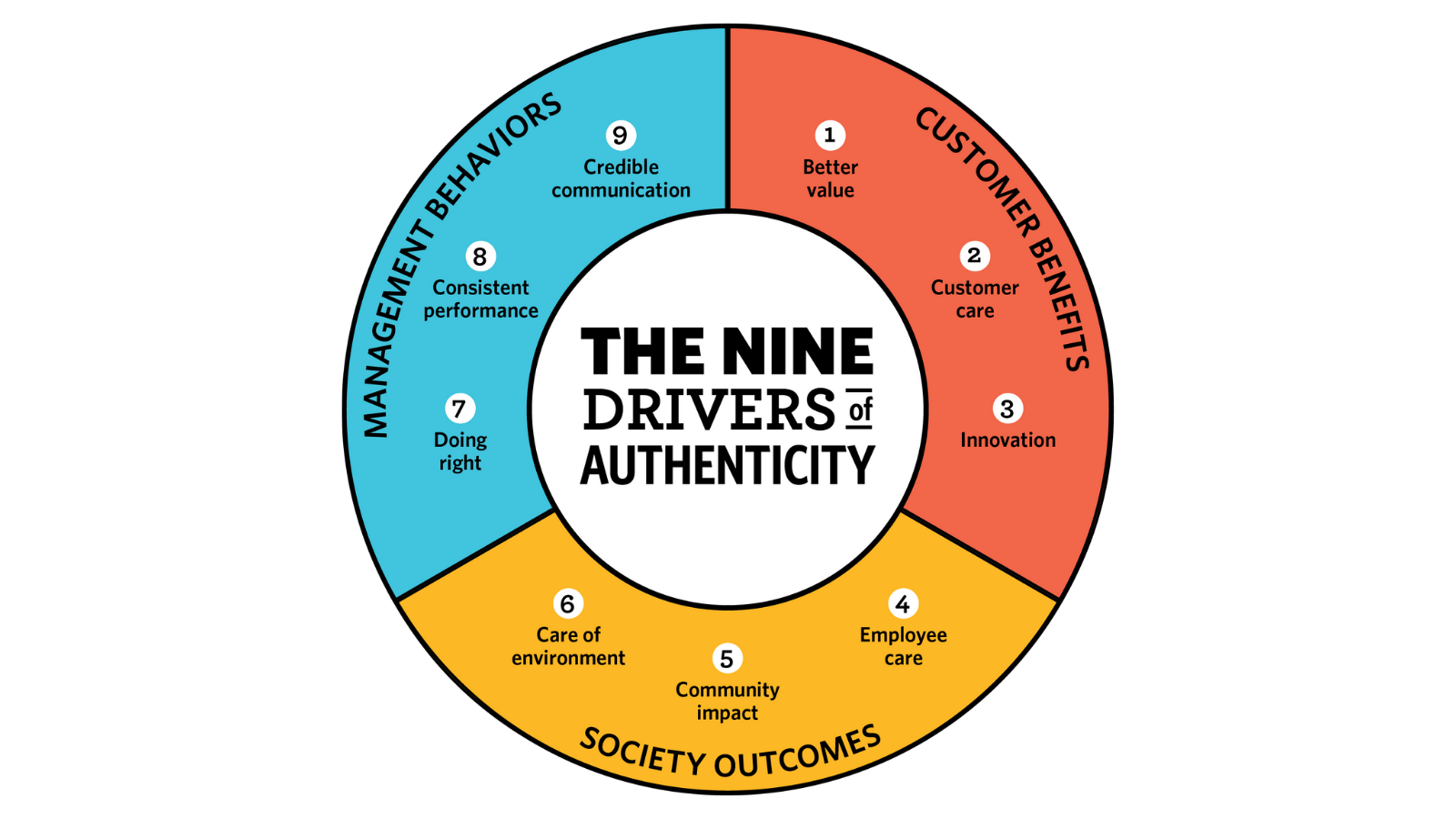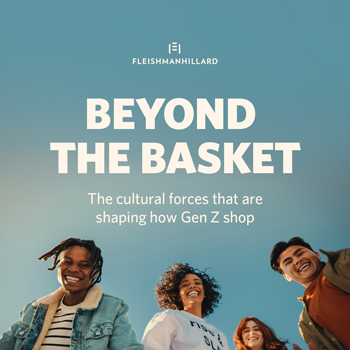The Nine Drivers of Authenticity
Does your brand have an authenticity problem?
In 2021, it’s not just about what you sell, but how your brand and your leaders engage with society.
Our authenticity research shows about half (49%) of UK consumer perceptions and beliefs about a company are shaped by attributes related to a company’s ‘customer benefits’ i.e. the products it offers and services it provides.
The other half of consumer perceptions are shaped by a company’s impact on society (32%) and information regarding how a company’s management behaves (19%).
Together, these drivers show the expectations of today’s consumers, and how they engage with brands.
At its heart, authenticity is the fundamental alignment of who you claim to be and who you really are. If the two are at odds, no matter who you are, people will be let down or dissatisfied, and you will fall short of expectations.
Our analysis has shown that there are only nine drivers of authenticity, balanced differently depending on the sector and geography.

The Nine Drivers of Authenticity that shape consumer perceptions and beliefs.
-
Offering products and services that are better value
-
Taking better care of customers
-
Innovating new and better products and services
-
Taking better care of employees
-
Having a positive impact on society and communities
-
Taking better care of the environment
-
Committing to acting ethically and responsibly
-
Showing consistent and stable performance
-
Communicating in a way that is consistent, frequent and credible
Authenticity is all about context
Our expectations of companies and brands are in large part shaped both by our personal values and experience of our wider world.
Fears, hopes, interests and dreams are impacted by the shifting social, political, economic and technological forces always in play.
Whether it’s an election campaign, a shared experience with a loved one, a news item or a TikTok meme, they all contribute to our reaction to companies and brands and our expectations of them.
Today’s consumers have a desire for tangible action. They demand accountability, not the appearance of it. They want genuine change on society’s most pressing issues – from climate change and data, to social and racial equity. They want true authenticity.
FleishmanHillard has been studying authenticity for almost ten years, when we first set out in 2012 to explore the alignment between consumer expectations and experiences: what we like to call the ‘Authenticity Gap’.
The Authenticity Gap measures the gap between consumer expectations and their actual experiences of a company or brand using the Nine Drivers of Authenticity.
Watch Stephanie Bailey, senior partner, managing director corporate and head of FleishmanHillard’s COP26 Unit introduce the Authenticity Gap study and the Nine Drivers of Authenticity.
If you are interested in exploring the data in our report further, looking at your sector or company in full, please get in touch at [email protected].
Find Out More
-
Achieving Outsized Impact by Building Stronger Country Reputation
February 18, 2025


